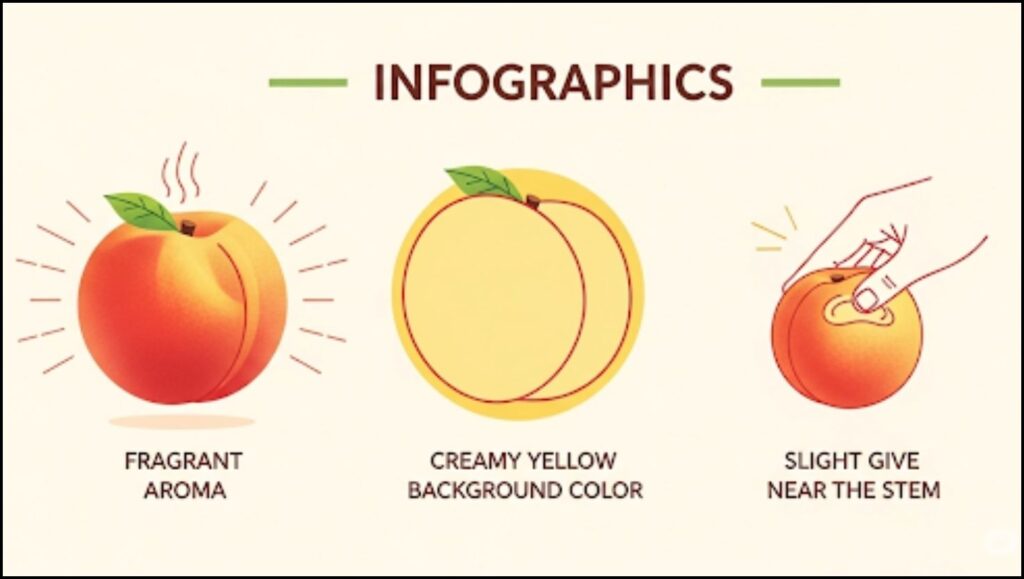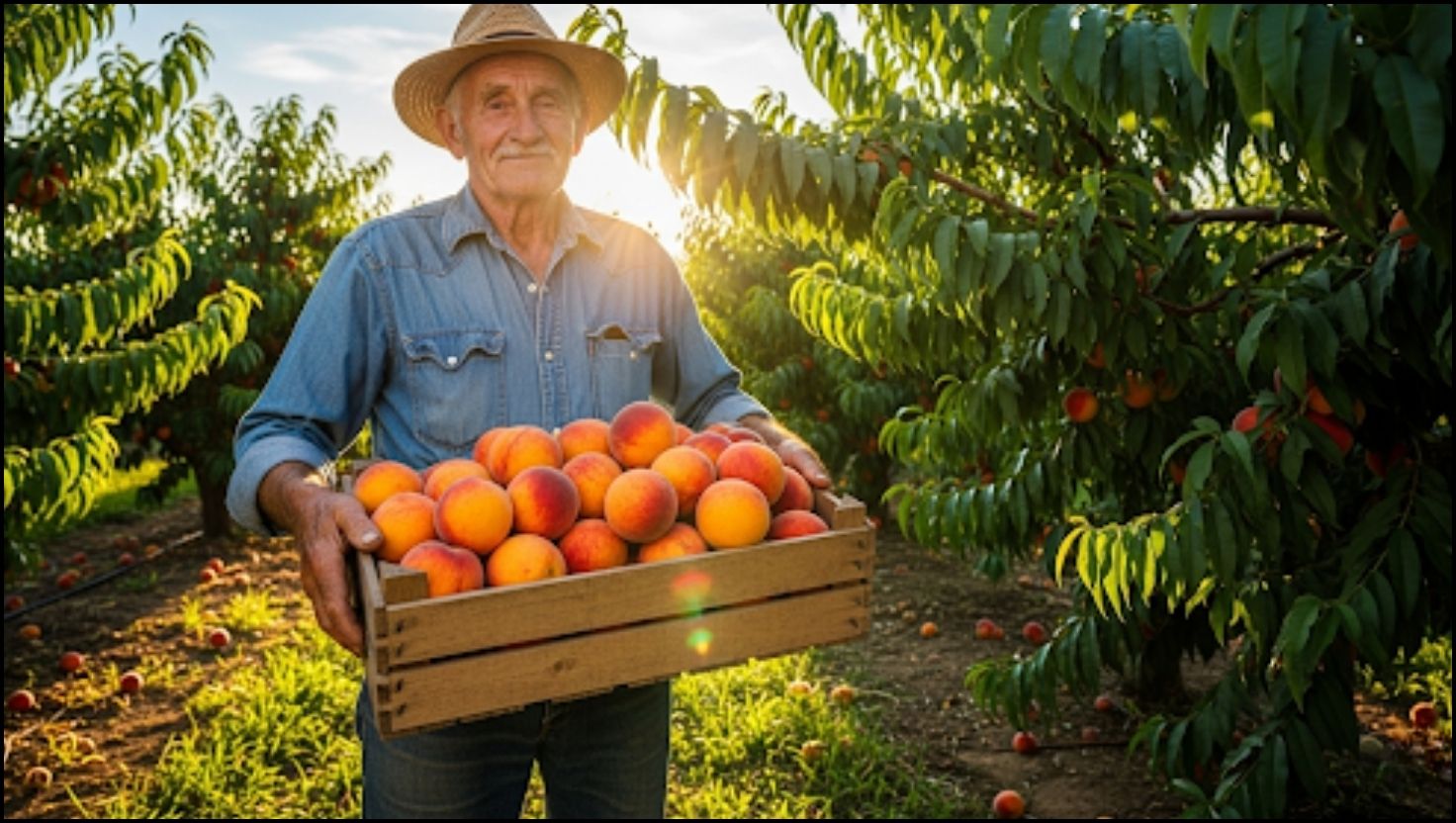As Georgia’s iconic peach industry confronts another season of unpredictable weather, growers are offering enhanced guidance to help consumers select the highest quality fruit. Farmers emphasize that traditional visual cues can be misleading and that understanding a peach’s subtle characteristics is key to finding the best Georgia peaches amid a challenging harvest.
The Grower’s Standard: What to Look For
Veteran growers, whose livelihoods depend on fruit quality, assess peaches using methods that go far beyond a simple glance. These techniques, once trade secrets, are now being shared more widely to help shoppers make better choices and reduce food waste.
“People have been trained to look for a lot of red, but that’s just not the indicator of a sweet peach,” said Lawton Pearson, a sixth-generation farmer at Pearson Farm in Fort Valley, a major hub of Georgia’s peach production. “You have to engage more of your senses.” According to experts at the University of Georgia (UGA) Cooperative Extension, a research-based educational body, understanding a few key indicators can dramatically improve a consumer’s success rate.
How to Select the Best Georgia Peaches: An Expert Guide
Selecting a perfect peach involves more than just picking the prettiest one. Agricultural experts and farmers advise a multi-sensory approach focused on aroma, background color, and a gentle touch. The Primacy of Scent The single most reliable indicator of a flavorful peach is its aroma. A ripe, ready-to-eat peach will emit a sweet, fragrant scent. If there is no smell, the peach was likely picked too early and will not develop a full flavor profile, according to guidance from the Georgia Peach Council.
“Your nose knows,” Pearson stated in a recent interview. “If you can hold that peach up and it smells like you want it to taste, you’ve got a winner. That’s the number one thing we look for.”

Background Color, Not Blush A common consumer mistake is equating the red “blush” on a peach with ripeness. That red color is simply where the sun hit the fruit and indicates the variety, not the flavor or sugar content. Instead, growers advise looking at the “ground color” – the part of the peach that is not red. This background should be a deep, creamy yellow or golden hue. A peach with a green or pale-yellow background was picked before it was mature and will likely have a mealy texture and lack sweetness.
A Gentle Touch To check for ripeness, apply gentle, firm pressure with your whole finger not your fingertip near the stem end of the peach. It should have a slight give. If a peach is rock-hard, it needs more time. If it is soft or mushy, it is overripe. “You want to handle them like you would eggs,” advised the Georgia Peach Council in its 2025 consumer guide. Bruising from excessive squeezing is a primary cause of spoilage at grocery stores, impacting both consumers and retailers.
Agricultural Challenges Facing the Peach State
The push for consumer education comes as Georgia’s peach industry grapples with significant agricultural challenges. Unseasonably warm winters followed by late spring frosts have created volatile growing conditions in recent years, a pattern documented by the U.S. Department of Agriculture (USDA). The 2025 peach season has been particularly affected by an April frost event that reduced yields in several central Georgia counties. These weather events can affect the size and volume of the crop, making it more important than ever for consumers to know how to identify quality among the available fruit. By choosing well, consumers can support farmers through these difficult seasons.
Storing Peaches for Optimal Flavor
Proper storage is crucial for maintaining the quality of your selected peaches. If the peaches are firm, they can be left on the counter at room temperature, shoulder-side down, for one to two days to soften. Placing them in a paper bag can speed up this process. Once the peaches yield to gentle pressure and are aromatic, they are ripe. At this point, they should be moved to the refrigerator to stop the ripening process. According to the USDA, refrigerated peaches should be consumed within five days for the best flavor and texture.
As growers continue to navigate an uncertain climate, their advice serves a dual purpose: it helps consumers enjoy the best of the harvest while fostering a more resilient and informed market. This connection between the farm and the kitchen is vital for the sustainability of specialty crops like Georgia peaches.
Agricultural Experts Reveal the Easiest Way to Pick the Sweetest Watermelon


 How Quick Air Fryer Meals Are Reshaping the American Kitchen
How Quick Air Fryer Meals Are Reshaping the American Kitchen A Depression-Era Staple, Southern Tomato Gravy, Finds New Life in Modern Kitchens
A Depression-Era Staple, Southern Tomato Gravy, Finds New Life in Modern Kitchens Why a Forgotten 1950s Cake with a Secret Ingredient Is Trending Again
Why a Forgotten 1950s Cake with a Secret Ingredient Is Trending Again More Than a Dessert: How Tar Heel Pie Captures the Essence of North Carolina
More Than a Dessert: How Tar Heel Pie Captures the Essence of North Carolina